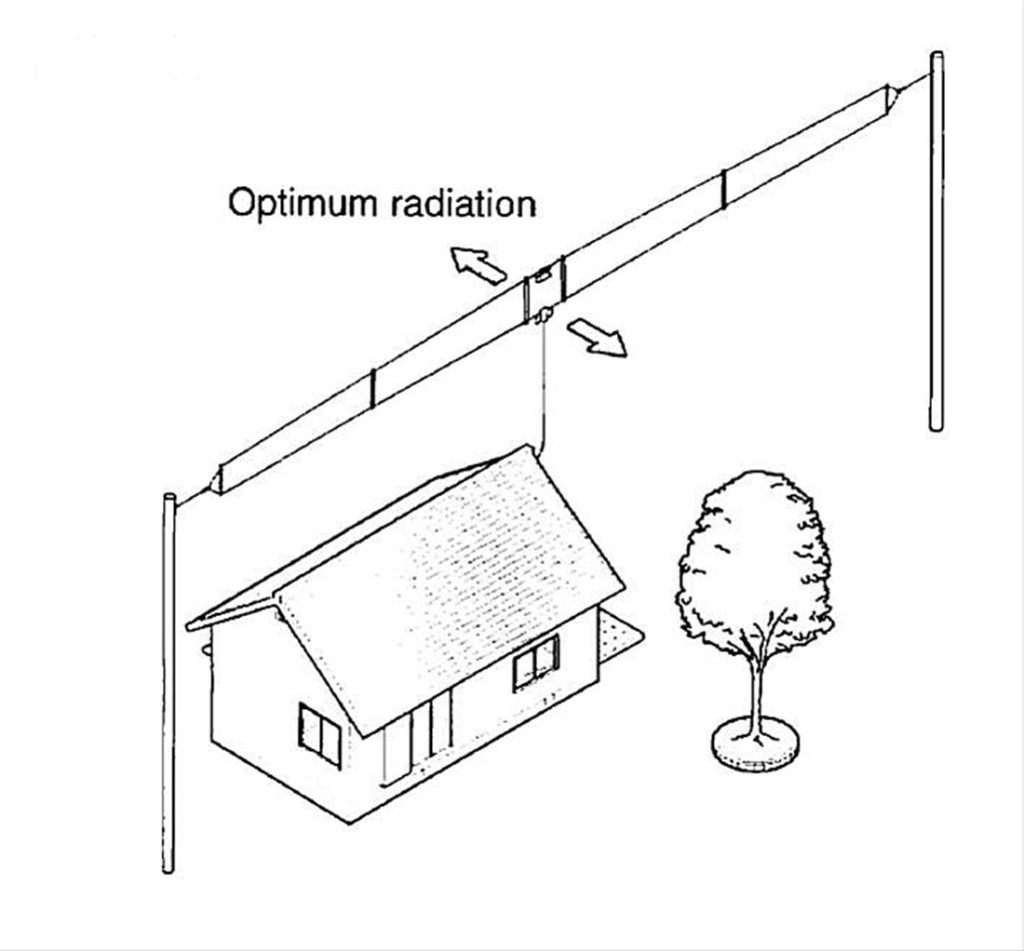Despite the mixed eHam reviews, a friend of mine decided to purchase a Comet CHA-250HD vertical antenna to use when camping. It’s sold as a broadband HF/VHF vertical that does not require radials or a tuner. Some people think it’s the greatest thing since sliced bread, but others call it an expensive dummy load. There’s no middle ground here—they either love it or hate it.
There’s no secret sauce here—no-tune antennas are a compromise. They won’t give you performance like a Yagi or a perfectly tuned dipole. But if you are space restricted and want a reasonably good HF antenna to get you on the air with minimal effort, this option might be your answer.
Broadband Verticals
Physically, the CHA-250HD antenna consists of a 23.5-foot aluminum element fitted to the top of a black “mystery canister,” whose contents are the subject of considerable speculation. A few brave souls have actually opened the canister—not an easy task. They found a modified 5:1 matching transformer inside.
The Diamond BB7V uses a 6:1 matching transformer and adds a 600-ohm resistive load. Its principle of operation is similar to the Comet, but the BB7V has a slightly shorter vertical element.
Both the Comet CHA-250HD and Diamond BB7V are omni-directional antennas that operate on every HF band 80-10M, including 60 and 30M. No tuner is required, so band changes are instant. It’s very convenient switching bands without changing antennas. If you can’t put up a full-size antenna, both can be attractive alternatives. The broadband nature is a plus, and it allows band hopping on just one antenna.
It’s true that no counterpoise or radials are required for either antenna. The design uses the coax shield and/or metal mounting pole as a simple counterpoise. Both work reasonably well with this arrangement, but adding a few can help performance.
Several owners of these verticals have recommended installing a couple of counterpoise wires for better performance. If you have the space, cut two wires—one at a 1/4 wave on 80 meters and the other to a 1/4 wave on 40 meters—and then attach to the lower U-bolt. I tried this on a CHA-250HD and found that it helps since the antenna is electrically short on both of these bands. Adding a counterpoise for the upper bands will also help to some degree.
Both verticals are simple to assemble, and the quality of the components is very good. Though their antennas can be mounted near ground level, Diamond and Comet recommend putting them up in the air at least 10 feet to avoid humans and pets. Comet suggests 35 feet for best performance. They’re very light but a bit unwieldy to position vertically, especially with a mast attached. Putting one up is usually a two-person job.
In all fairness, both Comet and Diamond make no inflated claims about these products, calling them a compromise antenna suitable for tight spaces, HOA use, and portable operation. They feature shortened, non-resonant vertical elements measuring 23.5 and 22 feet respectively with proprietary matching units at the base. Properly installed, each has 10M to 80M coverage with SWR usually 2:1 or less on amateur bands, and a maximum power limit of 250W PEP.
In the Loop–T2FD
The terminated, two-wire, folded dipole (T2FD) is a lesser-known antenna in a relatively small package. A T2FD is essentially a closed loop design with the element ends folded back and joined by a non-inductive resistor—a relative of the rhombic and Beverage. It can provide wide frequency coverage and a lower noise floor on receive. Power ratings vary, with the Icom AH- 710 and Yaesu YA-30 at 150W PEP. The Bushcomm BBA series can handle 125-2.5 kW PEP, depending on the model. The illustration below shows deployment of the AH-710:

The T2FD began as a general-purpose shortwave antenna developed in the late 1940s by the United States Navy at Long Beach, California. They employed a Model TCC Navy 1 kW transmitter, with a frequency range from 2 to 18 MHz. After a year of use on all frequencies, they found the T2FD performed better than individual antennas on the various bands. It functioned well over a broad frequency range, without marked dead spots in terms of frequency, direction, or angle of radiation above the horizon.
In 1949, Navy Commander G.L. Countryman introduced the terminated folded dipole to the public (QST Magazine, June 1949). In his article, he presented updated dimensions for an antenna that he suggested should work well for amateur radio use. Since then, the terminated folded dipole and its variations have appeared in several publications, articles, and antenna handbooks.
The value of the terminating resistor is rather critical. Its value depends on the feedpoint impedance, and a balun is used when fed with coax. The fact that the antenna has a built-in terminating resistor makes some people think that power is wasted. In fact, depending on the dimensions and frequency of operation, the terminating resistor may do more than helping the SWR slightly—it can contribute to more power efficiency.
Like the no-tune verticals mentioned earlier, debate has continued for years. Hams that have used the antenna generally sing its praises. On the other hand, most of the criticism of the T2FD tends to be centered on mathematical models that say it can’t work well and characterize the resistor as a dummy load. It’s like the myth about scientists having proved that the bumblebee cannot fly. These antennas can, and do, perform well in real life, as long as you install them properly and keep your expectations realistic.
No-Tune Antennas—A Free Lunch?
What the T2FD and no-tune verticals really give you is the ability to avoid an antenna tuner and have a single antenna to cover a multitude of bands continuously, including 60M and MARS frequencies. Their all-around performance, relatively modest size, and broad matching capabilities make them a viable choice.
After my own experiences using the CHA-250 and AH-710 antennas, I can tell you they work reasonably well—at least much better than I expected.

